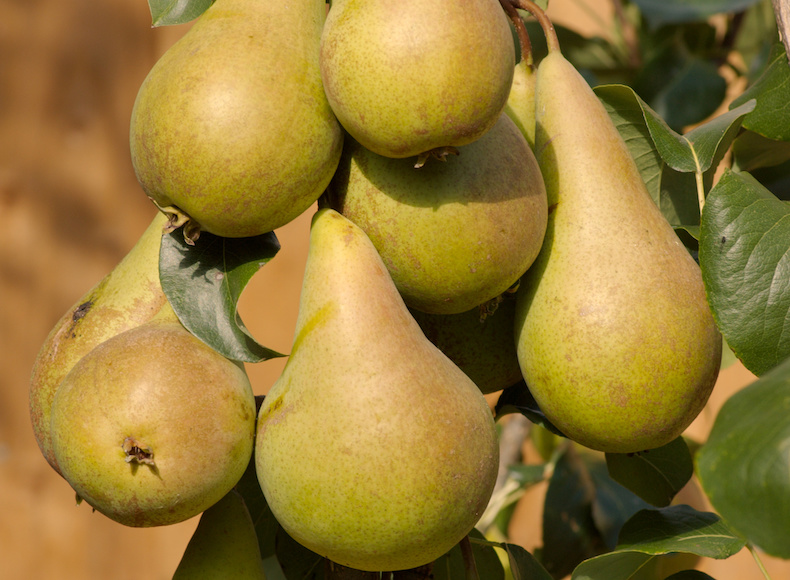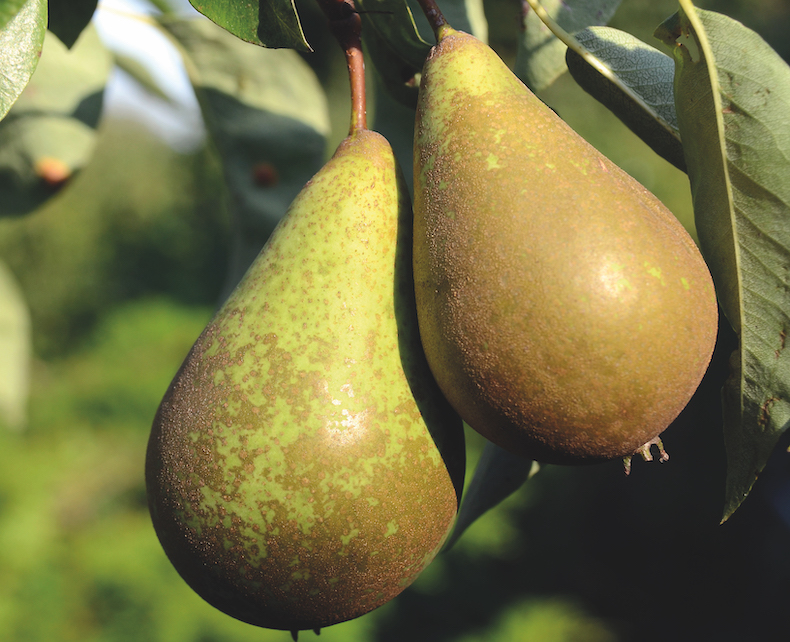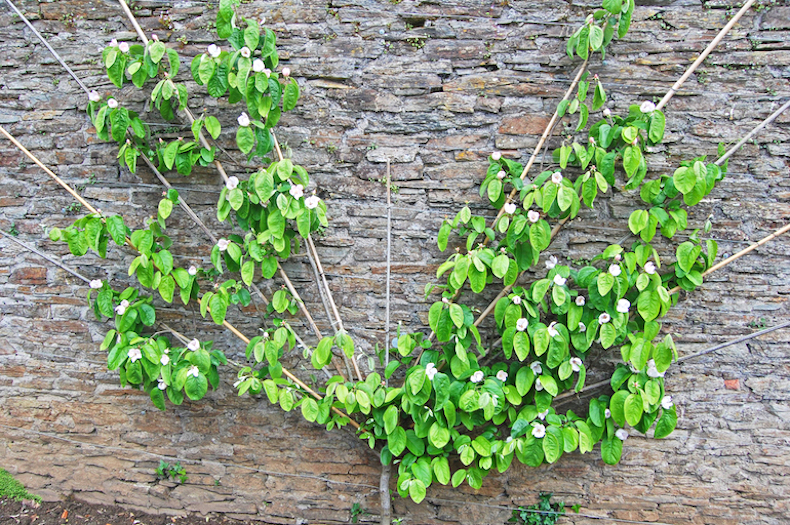
How to prune pear trees
It's a good idea to prune your pear trees regularly to encourage them to crop well. Pruning stimulates the growth of new fruiting wood. Done well, it also allows more air to circulate which keeps your tree healthy and allows plenty of light through the canopy to help your fruit ripen. If you need advice on how and when to prune your pear tree, here's Mandy Bradshaw's quick guide to get you started.
Browse our full range of pear trees for more inspiration.
When should I prune a pear tree?

Pruning your pear trees regularly will help light and air to circulate
Image: Pear 'Concorde' from Thompson & Morgan
The best time to prune your pear tree is determined by how the tree is being grown. Free-standing trees should be tackled from mid-winter to early March when the leaves have fallen. But if a pear is being grown as a cordon, espalier or fan, it’s best pruned in summer, with just a light tidy up over winter.
Either way, it’s important to have the right tools: sharp secateurs, a pruning saw and, for free-standing trees, a ladder (preferably a tripod version with three legs).
Pruning a standard pear tree

Standard pear trees should be pruned in winter when they've dropped their leaves
Image: Pear 'Doyenné du Comice' from Thompson & Morgan
When pruning a standard pear tree, keep in mind the overall shape and err on the side of caution. It’s always better to prune too little than too much. The aim is to allow light into the centre of your tree, and remove a little old wood each year in order to stimulate new growth.
- First remove any weak, dead, dying or diseased wood.
- Next, reduce the length of main branches by about a third. Cut them back to a good, outward-facing bud, making a slanted cut down and away from the bud to prevent rain pooling on it.
- The side shoots, known as laterals, should be left over winter unless they are crossing another branch, which can lead to rubbing and disease.
- Take out any growth that is heading towards the tree’s centre as it will reduce light and air, resulting in poor fruit ripening and a greater risk of disease.
- If the fruit-producing spurs are too crowded, remove some. Start with those on the underside of branches as fruit there will struggle to ripen. Shorten others to leave the strongest with plenty of space for developing fruit.
- Some varieties of pear trees fruit at the ends of shoots, known as tip-bearing. To reduce crowding, these should have some of the older branches cut back every year to a strong shoot.
- In mid-July, cut back laterals to three leaves above a cluster of leaves at the base.
Pruning a trained pear tree

This fan trained pear tree should be pruned in summer
Image: Deatonphotos/Shutterstock
Cordons, espaliers and fan-trained pear trees can be pruned from mid-July. Many of these trees are ornamental in nature, as well as grown for fruit, so maintaining an even shape is just as important as improving their cropping potential.
- Any new shoots more than 20cm long should be cut back to three leaves above the basal leaves.
- Any new shoots from existing sideshoots should be reduced to one leaf above the basal leaves.
- Remove any growth that is spoiling the shape, particularly vertical growth, cutting it close to the parent branch, leaving a small stub.
- If you get more growth after summer pruning, remove it in September.
We hope we’ve given you plenty of tips to help you prune your pear trees successfully so that they continue to thrive and bear many years of delicious fruit.
See all pruning guides
Individual guides
Flower & Shrubs
- Pruning Buddleja
- Pruning Camellias
- Pruning Clematis
- Pruning Fuchsias
- Pruning Hydrangeas
- Pruning Hypercium - St Johns Wort
- Pruning Lavender
- Pruning Magnolias
- Pruning Passion Flowers
- Pruning Rhododendron
- Pruning Ribes Sanguineum
- Pruning Rosemary
- Pruning Roses
- Pruning Tree Peonies
- Pruning Wisteria
- Pruning Asparagus
- Pruning Blueberries
- Pruning Goji Berries
- Pruning Honeyberries
- Pruning Raspberries
- Pruning Apple trees
- Pruning Box and Yew trees
- Pruning Catalpa trees
- Pruning Christmas trees
- Pruning Olive trees
- Pruning Patio Fruit trees
- Pruning Plum trees
Fruit & Veg
Trees

Written by: Mandy Bradshaw, the Chatty Gardener
Cotswold-based Garden Media Guild member, Mandy Bradshaw, is also known as the Chatty Gardener. Passionate about gardening and writing, her beginnings are in football reporting for her primary school, and Mesembryanthemum planting with her mother. Winner of the 2018 Property Press Awards 'Garden Journalist of the Year', she writes for not only her own blog but also a range of newspapers, magazines and other gardening and non-gardening sites.Banner image: Nataliia Dvukhimenna/ Shutterstock
Sign Up For Exclusive Special Offers




© 2025 Thompson & Morgan. All rights reserved. A division of Branded Garden Products Limited.



